When you buy through our links, we may earn money from our affiliate partners. Learn more.
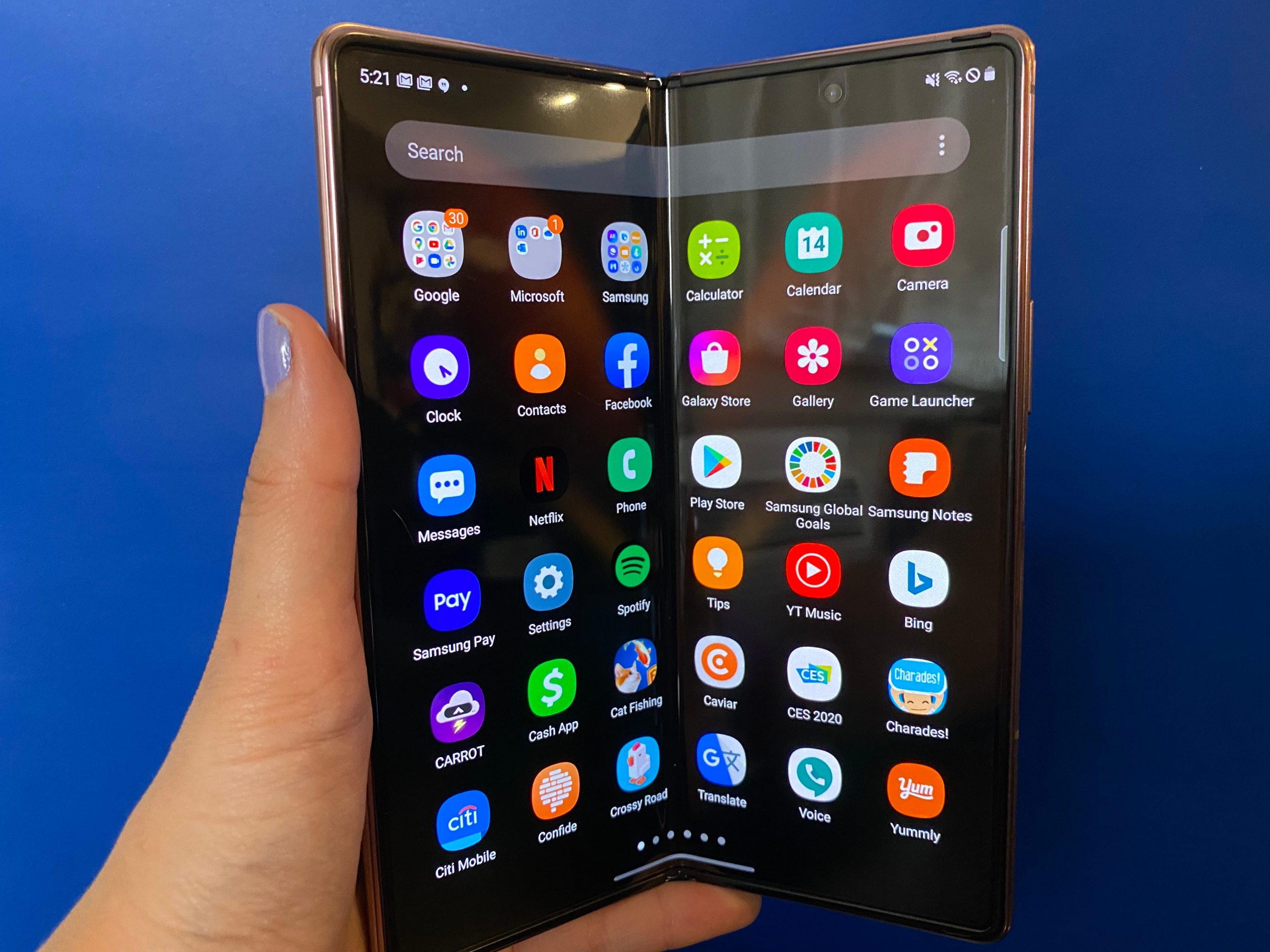
- Samsung’s Galaxy Z Fold 2 feels like the most polished foldable device I’ve used yet.
- It offers a large, vibrant tablet-sized screen that can now stay propped open halfway, offering more viewing angles than its predecessor.
- It’s also said to be more durable than the original Galaxy Fold, which broke for some reviewers after just two days of use.
- But, at $1,999.99, the Galaxy Z Fold 2 is still too expensive for the benefits it provides, and it still feels awkward to use in phone mode given its size and thickness.
Samsung may have just launched its first foldable smartphone last September, but it’s already on its fourth model.
The Galaxy Z Fold 2, which launched on September 18 for $1,999.99, represents the culmination of Samsung’s efforts so far. It’s a design that largely maintains the same look as its troubled predecessor, but with some of the flourishes of its more compact Galaxy Z Flip.
At twice the price of a premium smartphone, it’s hard to recommend that anyone actually buy the Galaxy Z Fold 2. But, if you do, you likely won’t be disappointed — and that’s not something I could have said about the original Galaxy Fold or Microsoft’s Surface Duo.
The Galaxy Z Fold 2, as expensive as it is, doesn't ask you to make too many sacrifices to get the benefits of having a tablet and a smartphone in one device.
But, of course, it's not perfect. The device's biggest drawback, other than its price, is that it can still feel awkward as a smartphone replacement.
As I wrote when I reviewed the Microsoft Surface Duo, devices that seek to replace your smartphone and your tablet need to provide an equally good alternative to both. Samsung's Galaxy Z Fold 2 does that better than its predecessor and Microsoft's Surface Duo, but still takes some getting used to.
Here's a longer look at what it's been like to use the Galaxy Z Fold 2.
Samsung Galaxy Z Fold 2 specifications
- Display size and resolution: 7.6 inches with 2,208 x 1,768 resolution (Main screen); 6.2 inches with 2,260 x 816 resolution (Cover screen)
- Processor: Qualcomm Snapdragon 865+
- Main cameras: 12-megapixel ultra-wide, 12-megapixel wide-angle camera, 12-megapixel telephoto camera
- Front camera: 10-megapixel
- Cover camera: 10-megapixel
- Battery capacity: 4,500 mAh dual battery
- Memory: 12GB of RAM
- Storage: 256GB or 512GB
- Biometric authentication: Fingerprint sensor and facial recognition
Design and display
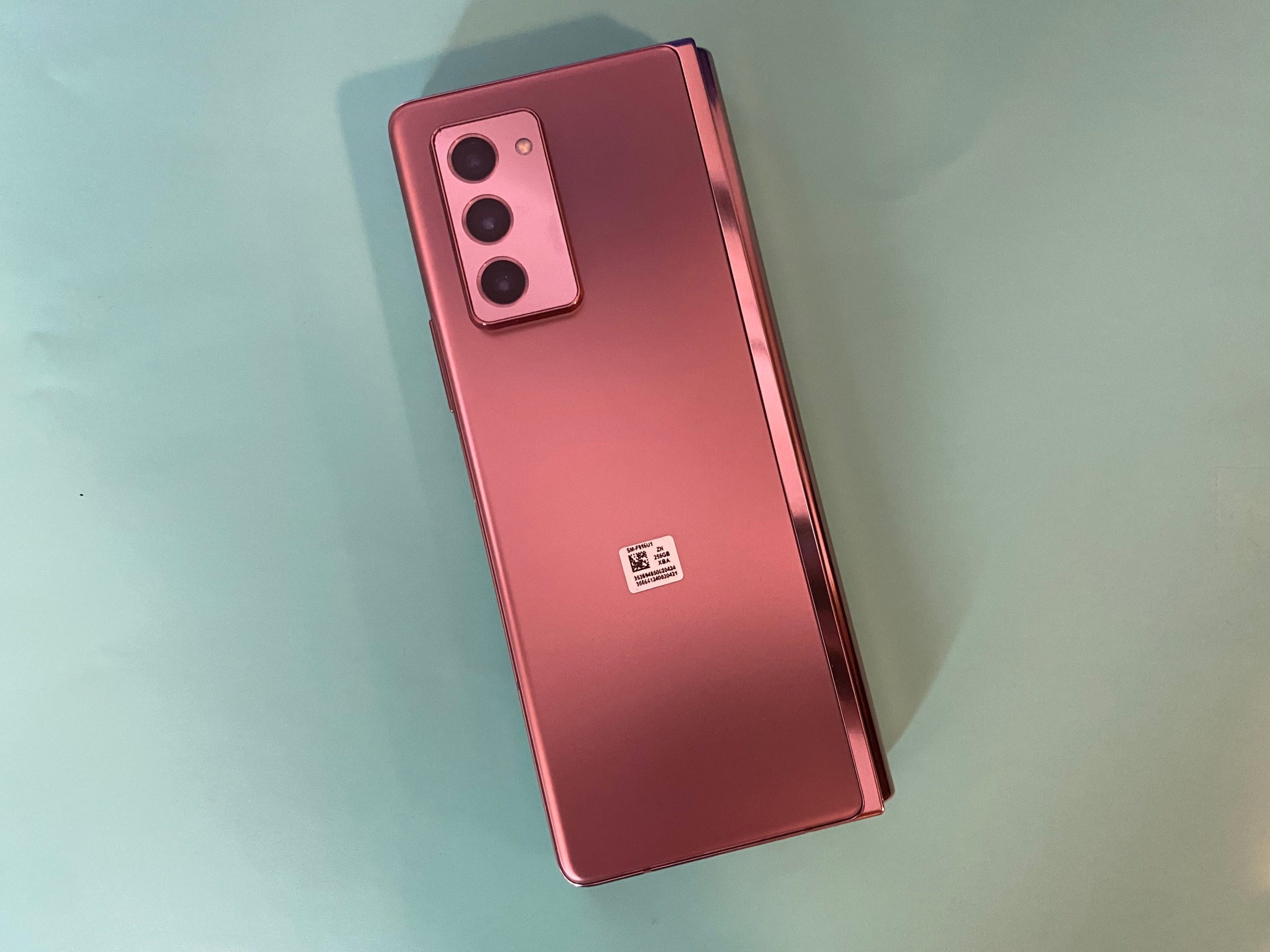
The Galaxy Z Fold 2's design is similar to that of the original Fold, but with many improvements. Among the biggest of those upgrades is its more flexible and reinforced hinge.
Samsung had to delay the original Galaxy Fold's launch after a small number of reviewers found that their device broke after just two days of use. In some cases, damage was caused by debris entering the hinge, while in other cases users accidentally removed a protective layer from the screen.
Samsung seemingly made improvements on both accounts. The company has implemented a new vacuum-inspired sweeper hinge to keep debris out. Upon unboxing the device, I also noticed that there was a label clearly informing users not to remove the phone's screen protector film and providing other tips for maintaining the device.
There's no IP rating on the Galaxy Z Fold 2, however, so be careful not to drop it in the sink.
From the back, the Galaxy Z Fold 2 looks similar to the Galaxy Note 20 Ultra: it comes in the same Mystic Bronze color as the Note 20 Ultra and has a similar-looking triple camera module.
The Galaxy Z Fold 2 feels sleek and light as a tablet; when opened, it measures just 6.9 millimeters thin, making it only slightly thicker than the 6.1-millimeter iPad Air. Its roomy 7.6-inch screen also feels much more immersive now that Samsung has gotten rid of the notch in favor of its hole punch-shaped camera cutout, which has become a staple of its other devices as well.
But, when closed, it feels a bit thick and clunky. The Galaxy Z Fold 2 essentially looks like two smartphones stacked on top of one another when shut. It's a bit cumbersome, but not unwieldy; it's still compact enough to use with one hand or take a quick photo. That gives it an advantage over the Surface Duo, which felt too wide to use comfortably in phone mode unless I was gripping it with both hands.
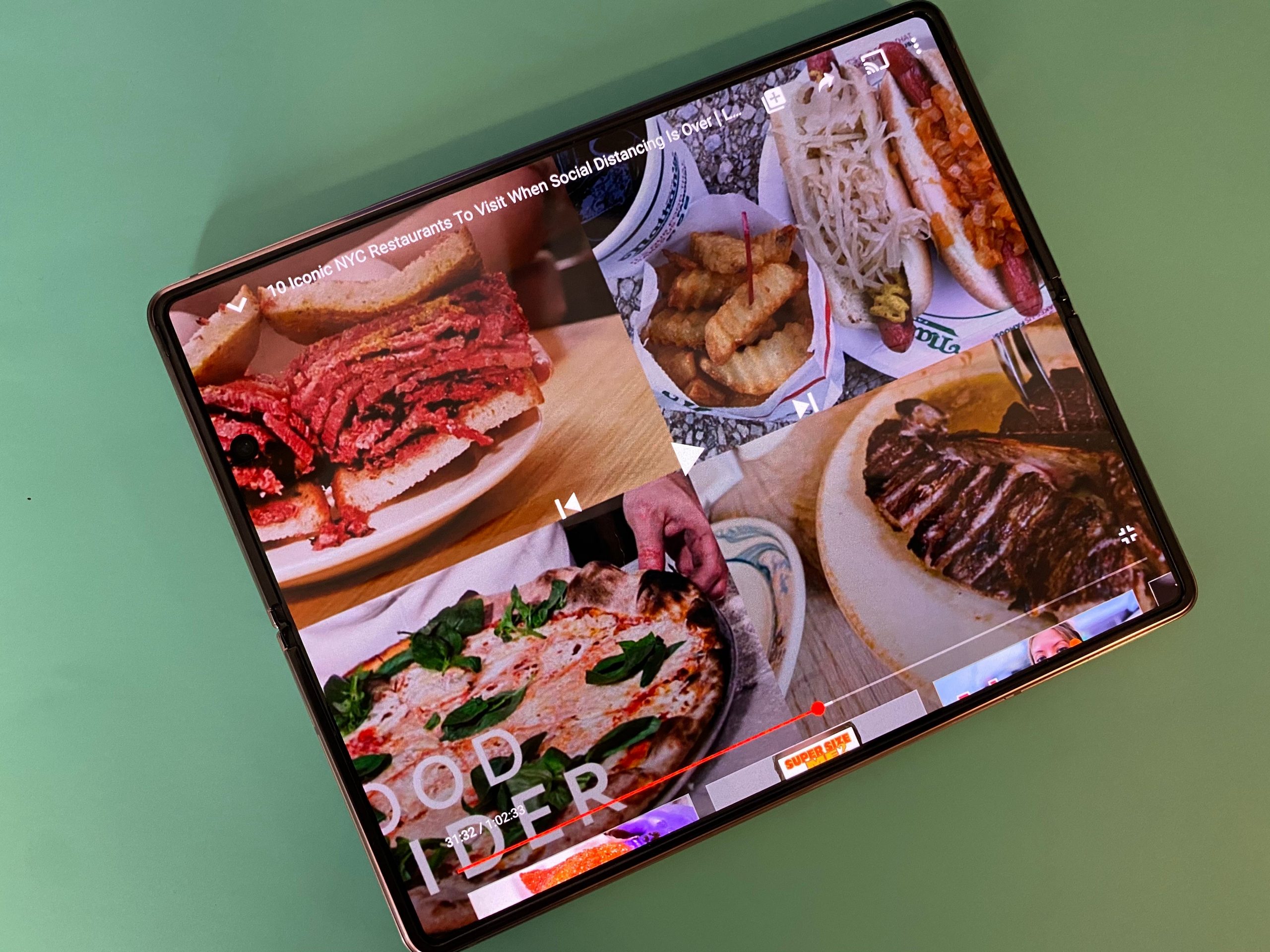
The Galaxy Z Fold also gained another major upgrade compared to its predecessor: its larger cover screen. The front screen on the new Galaxy Z Fold measures 6.2 inches, making it the same size as the Galaxy S20. That's a big improvement from the original Galaxy Fold's minuscule 4.6-inch display, which felt too cramped to use for anything other than checking the time.
I often find myself using the Galaxy Z Fold 2's cover screen when I want to send a quick text message or briefly check my email. While I appreciate the increase in size, the cover screen is still much skinnier than that of your average smartphone, so it still feels a little small to type on.
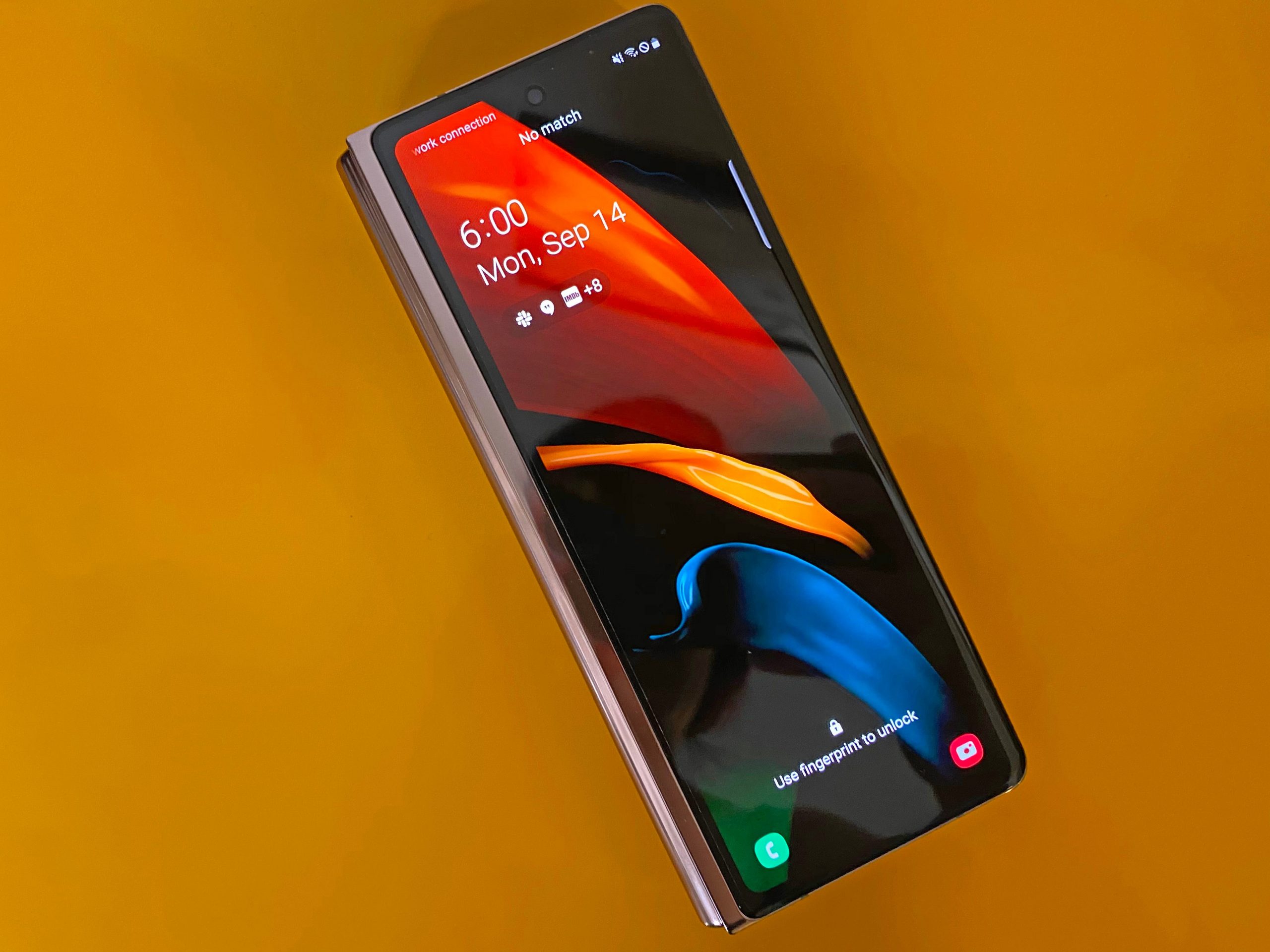
As to be expected from a device that's mostly screen, the Galaxy Z Fold 2's inner display resolution of 2,208 x 1,768 pixels boasts rich colors, sharp detail, and deep contrast. Although the crease is noticeable, it feels much more subtle on the Galaxy Z Fold 2 compared to the original Galaxy Fold.
Software
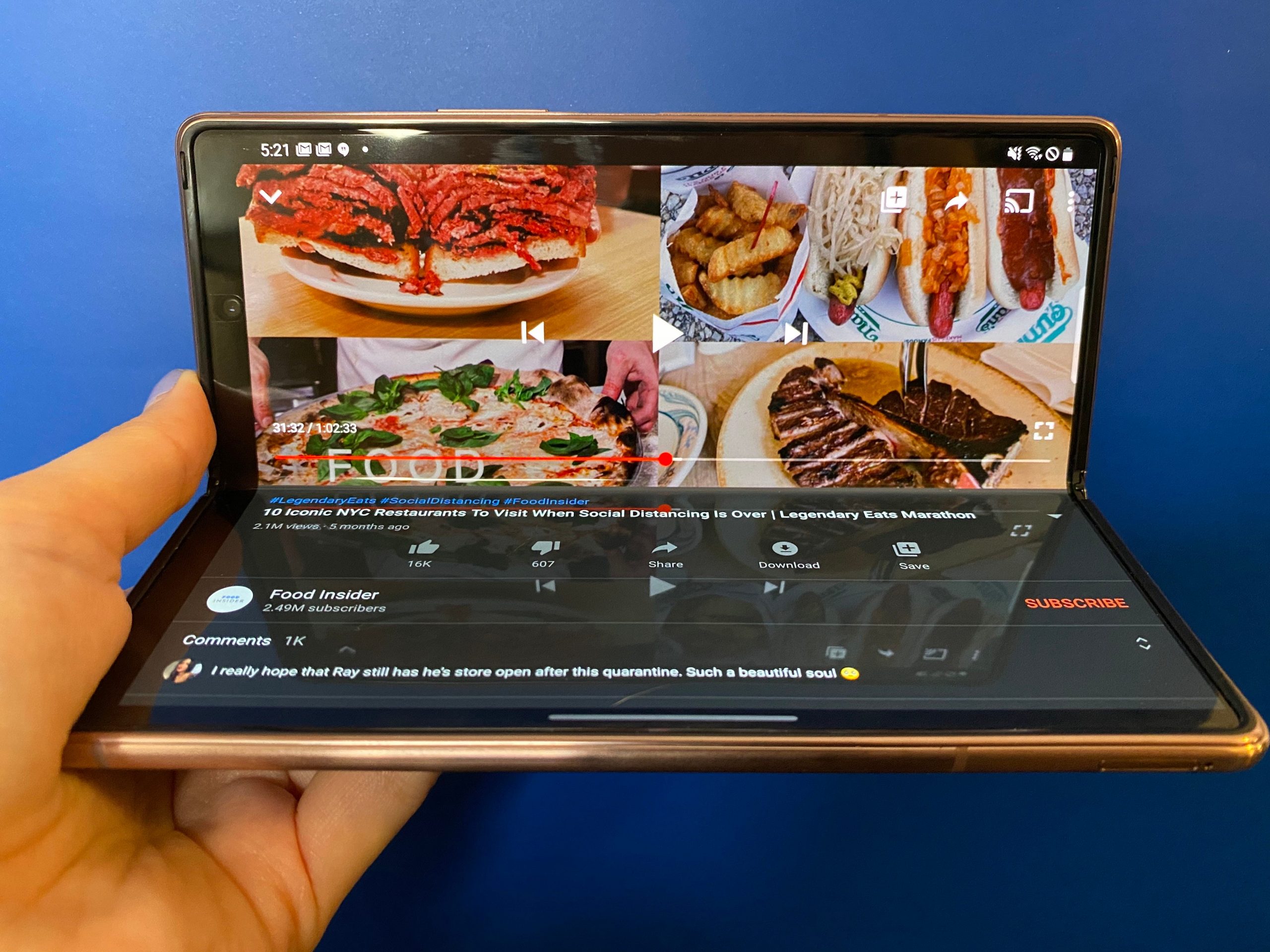
The Galaxy Z Fold 2's tablet-sized display wouldn't be of much use if apps weren't optimized to take advantage of it.
Like the original Fold, the Galaxy Z Fold 2 is capable of running up to three apps on screen at a time. Apps can be dragged-and-dropped in place on screen, and you can also pair two apps together so that they launch simultaneously — a feature Microsoft's Surface Duo also offers.
But, I am often more impressed with the way the Galaxy Z Fold 2 performs when running single apps. The Galaxy Z Fold's gigantic screen is perfect for times when you simply want a larger screen for watching Netflix, reading an important work email, or catching up on the news.
That's much more valuable to me than cramming two apps alongside one another, although the ability to do so is certainly a useful perk. The crease in the middle of the display is also far less noticeable than it was on the original Fold, making it even more useful as a tablet.
That's another benefit that the Galaxy Z Fold 2 offers over the Surface Duo. Microsoft's foldable phones consist of two separate screens, not one screen that folds, so using it as a tablet can be difficult.
The Galaxy Z Fold 2 also inherits one of the Galaxy Z Flip's best features: Flex Mode. This enables apps to reorient properly to fit the screen when your phone is propped open halfway. The best use case for this in my experience has been the camera app.
When in Flex mode, the Galaxy Z Fold 2 displays the camera's viewfinder on the top half of the screen and the camera controls on the bottom. That makes it easy to use your phone as a tripod without requiring any accessories. Flex Mode also works with YouTube, as shown in the image above.
Camera
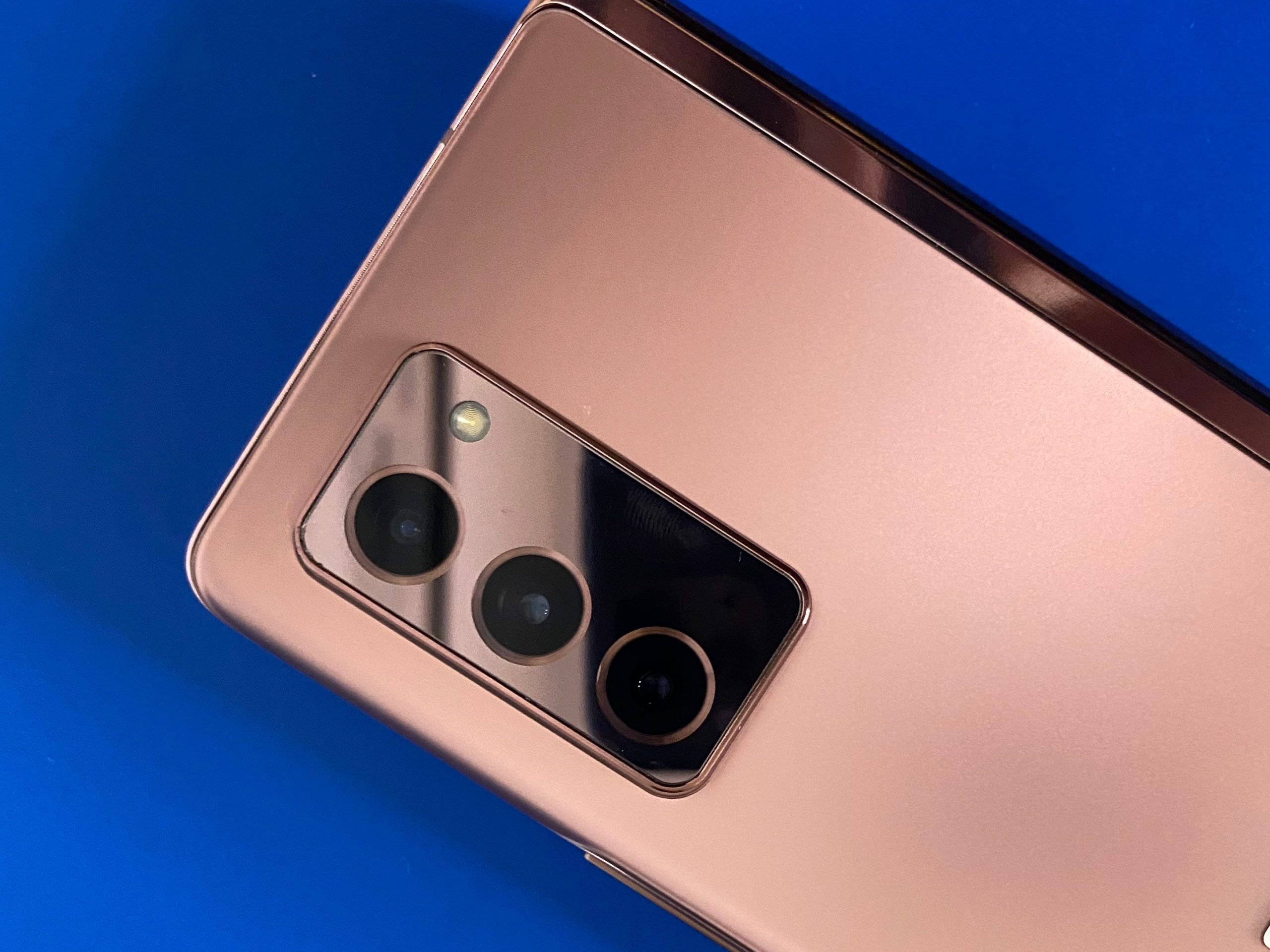
The Galaxy Z Fold 2 has a triple-camera setup that consists of a 12-megapixel ultra-wide camera, a 12-megapixel standard camera, and a 12-megapixel telephoto camera. There's also a 10-megapixel selfie camera on the cover display, and another 10-megapixel camera near the top of the screen upon opening the device.
That means the experience of capturing photo and video on the Galaxy Z Fold 2 doesn't feel much different than snapping pictures on a regular smartphone. The Surface Duo, by comparison, requires that you fold the displays all the way back and physically turn the phone around to snap photos.
The Galaxy Z Fold also has the camera quality you'd expect from a high-end smartphone, unlike the Surface Duo which took images that looked less sharp with poorer lighting by comparison.
The quality of the images taken on the Galaxy Z Fold 2 were on par with those shot on the iPhone 11 Pro, offering crisp detail and rich colors. The iPhone, however, was better at taking photos in low-light environments.
Take a look at some of the photo samples below:
Samsung Galaxy Z Fold 2
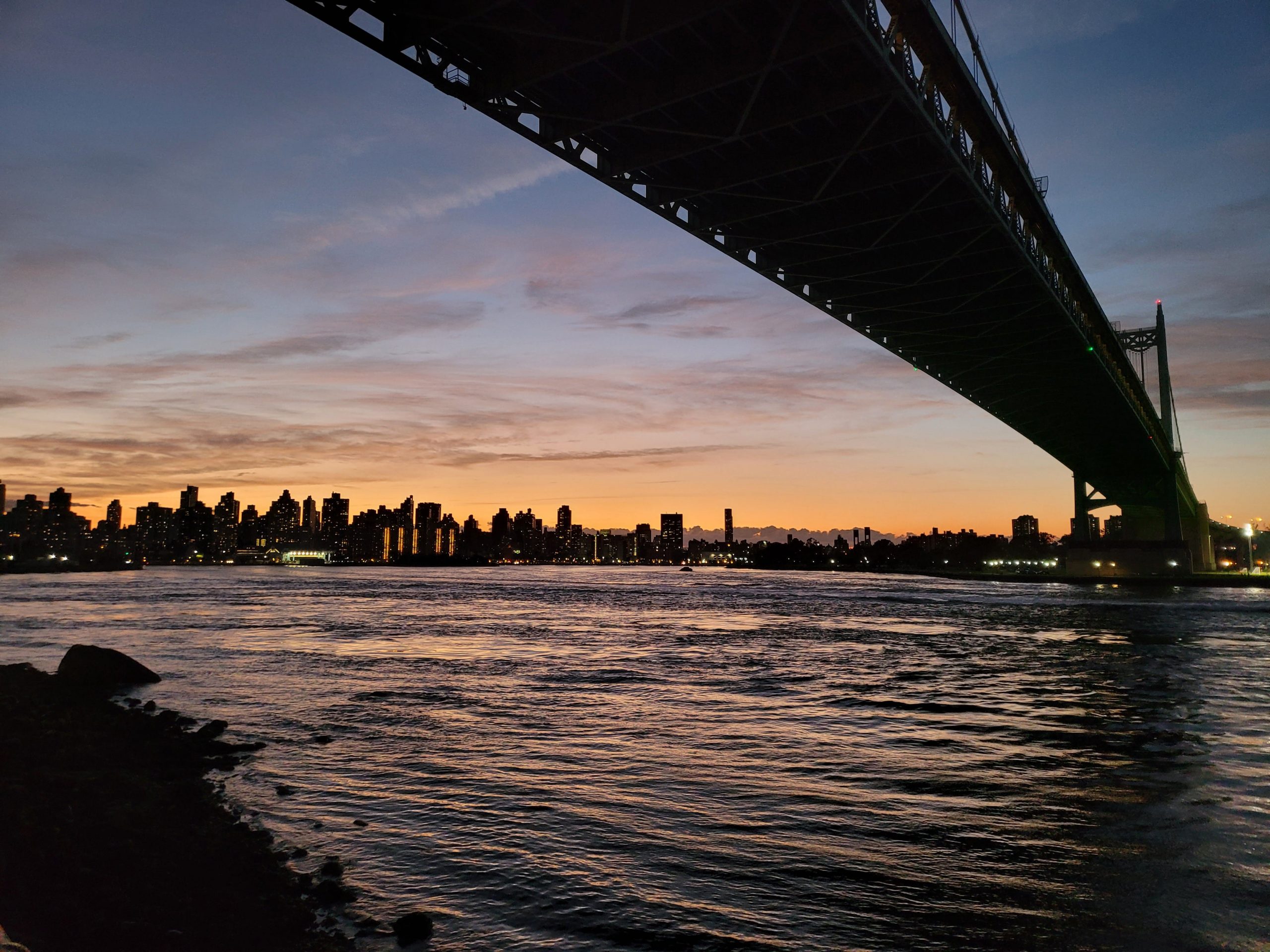
Apple iPhone 11 Pro

Samsung Galaxy Z Fold 2 (Low light)
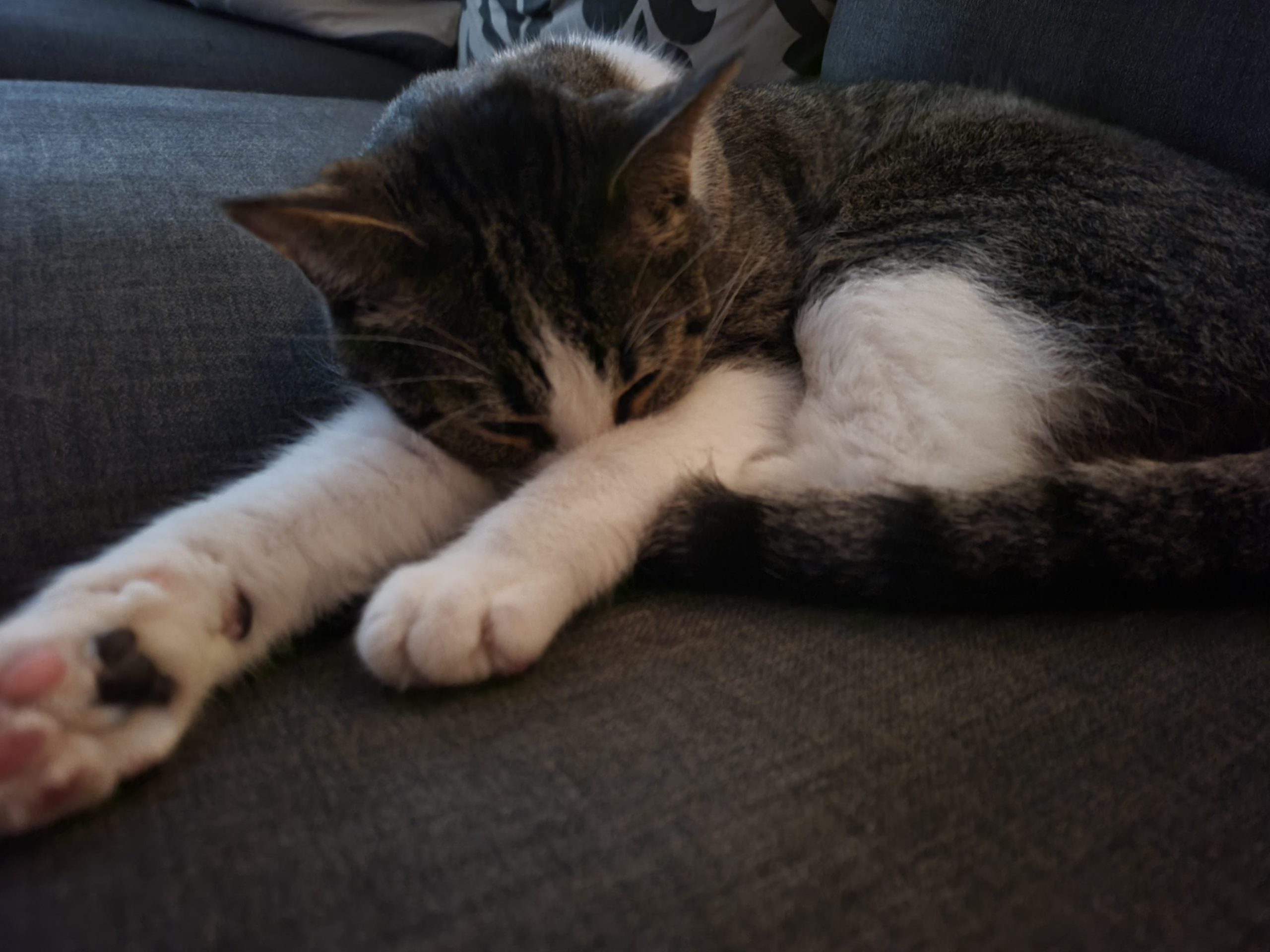
Apple iPhone 11 Pro (Low light)
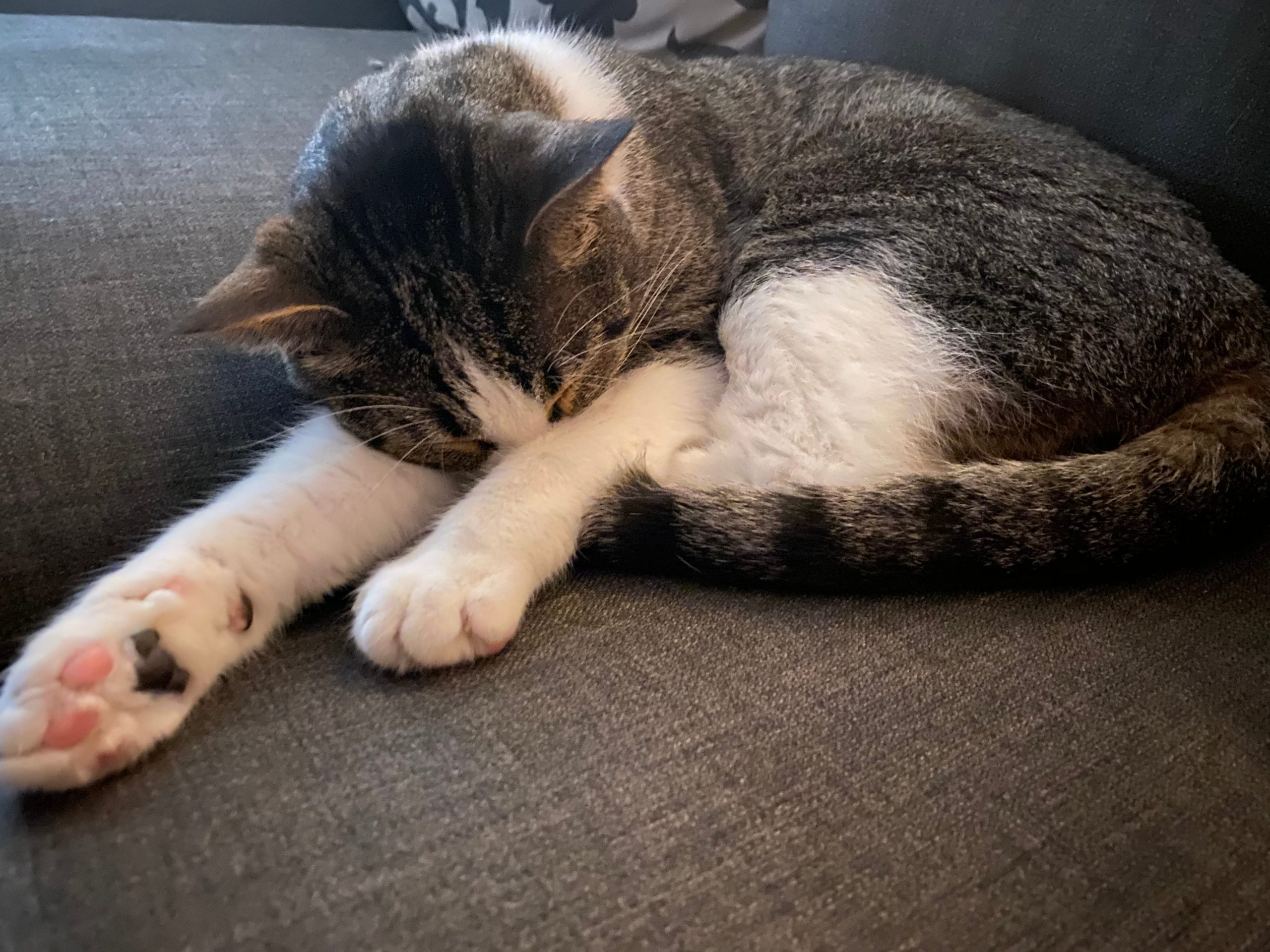
Battery life and speakers
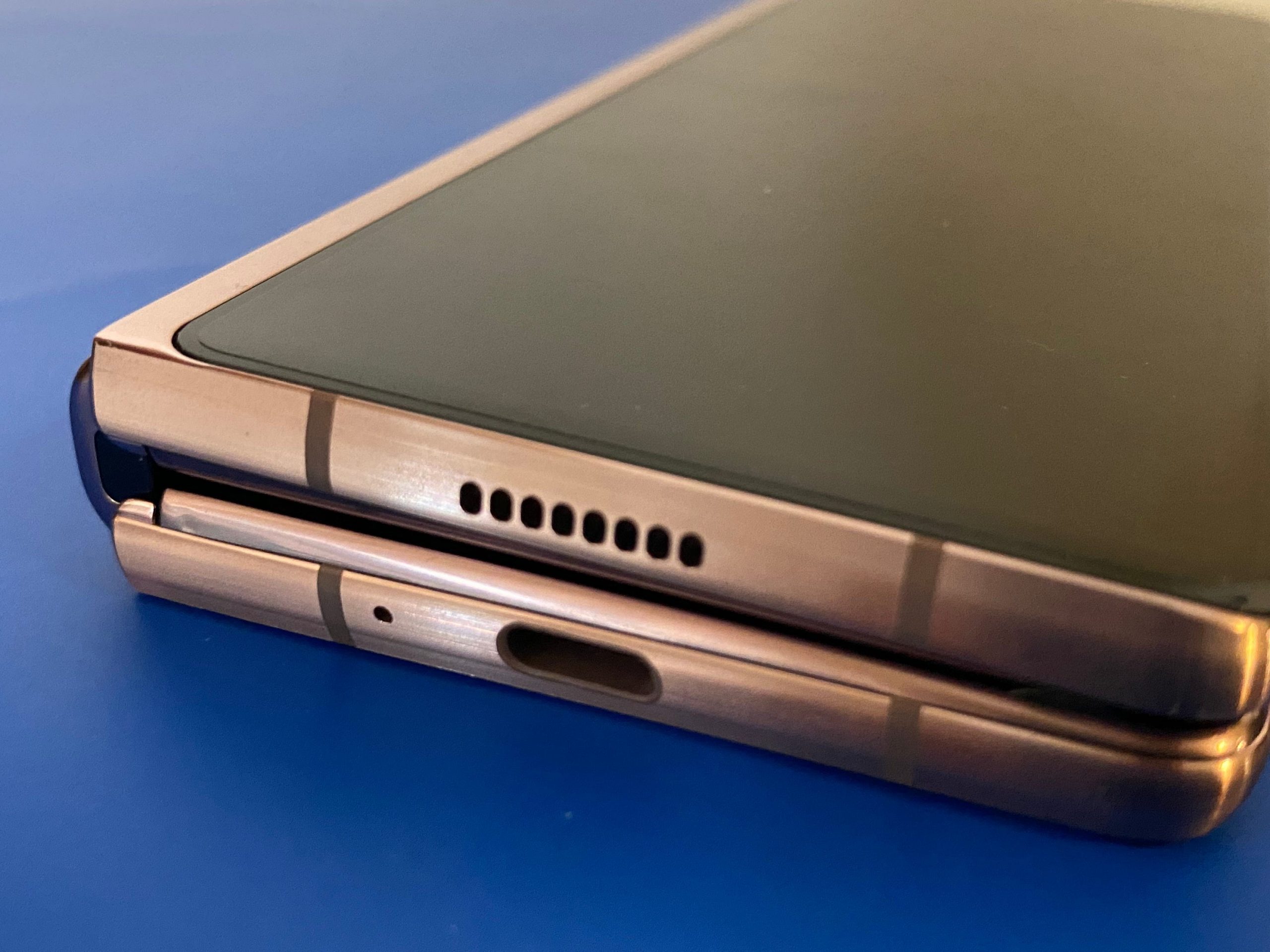
The Samsung Galaxy Z Fold 2 offers plenty of battery life to get you through a full day. After using it for about 10 hours throughout the work day, the Galaxy Z Fold 2 had 66% of its battery left.
It's important to remember that battery life will always vary depending on how you use your device. During my time with the Galaxy Z Fold 2, I've been primarily using it for checking email, reading the news, streaming Netflix, and listening to music.
One of the unexpected benefits of the Galaxy Z Fold 2's large size is its booming speakers. The Galaxy Z Fold 2's speakers are louder than that of any phone I've heard in recent memory, and make the iPhone 11 Pro Max's speakers sound shallow and less crisp in comparison. That's important for a device like the Galaxy Z Fold 2, which was likely designed with entertainment in mind.
The bottom line
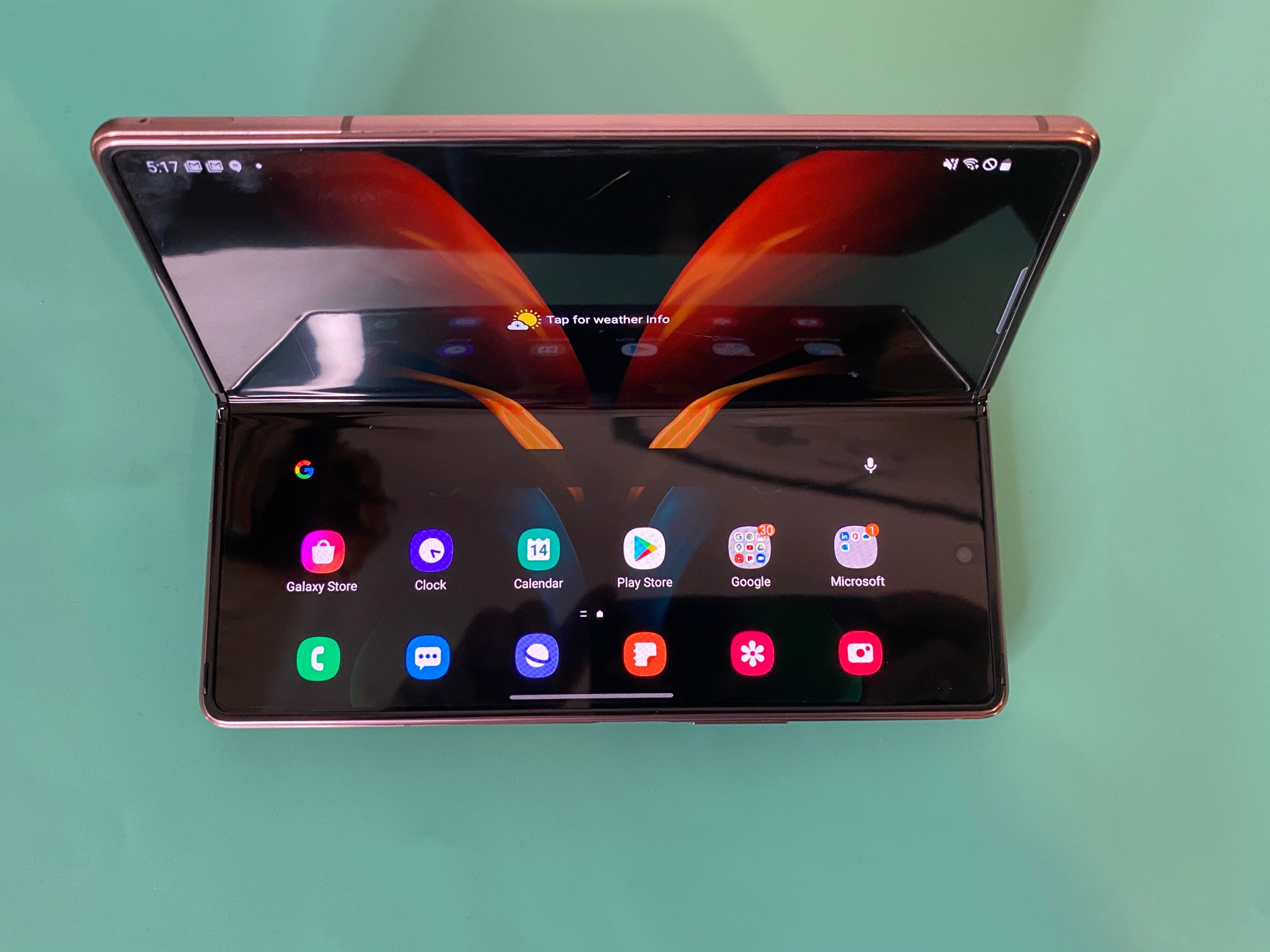
The Galaxy Z Fold 2 is one of the most promising foldable phone's we've seen yet. It improves on the original in important ways, particularly when it comes to durability and the size of its cover display.
But, at $1,999.99, the Galaxy Z Fold 2 is a luxury device. It's twice as expensive as high-end phones like the $1,000 Galaxy S20 and iPhone 11 Pro. And, the fact that Samsung is on its fourth foldable device in a year should be enough to give anyone a little pause before committing.
The Galaxy Z Fold 2 doesn't ask you to make any big compromises to get the benefits of a 2-in-1 device, like the Surface Duo does. But, its unconventional size still takes some getting used to when it comes to replacing your phone. It also doesn't have an IP rating, meaning its not as durable when it comes to water and dust resistance compared to less expensive traditional smartphones.
Regardless, the Galaxy Z Fold 2 convinced me that foldable phones can offer a lot of benefits for those who want a larger screen in a mobile device. But, for now, it's probably more cost effective and practical to just buy a tablet in addition to your smartphone.
Pros: Vibrant, tablet-sized screen; Good camera; Long battery life; Excellent speakers
Cons: Twice as expensive as regular high-end phones; No IP rating for water and dust resistance; Design can make it feel awkward in phone mode

